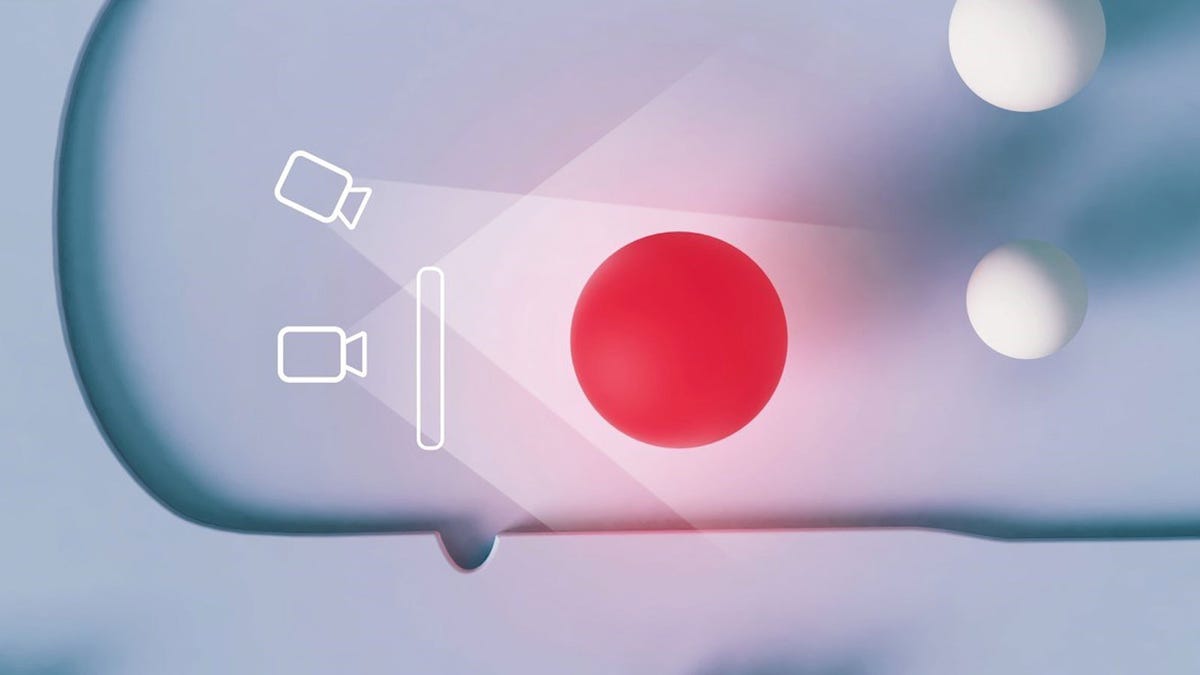Volvo’s EX90 Electric SUV Scans Your Eyes to Spot Tired Drivers

Two cameras in the cabin will track your eye movements. Image: Volvo
We all know the tale about Volvo being the first company to patent the modern three-point seatbelt but leaving the patent open for other automakers to use. It’s one of the things that has helped cement its stellar reputation for safety. Now, the company is starting to outline the new innovations that it hopes will make driving safer in the years to come.
The company outlined its ambitious safety schemes while teasing the details of its new EX90 electric SUV. The replacement for the outgoing XC90 is set to be revealed in November, but that didn’t stop Volvo from sharing more about the built-in safety tech that will come with the car.
Volvo had two main areas to discuss when it comes to the safety of its cars. On the outside, it is preparing to unveil a barrage of sensors to spot hazards in the road. While inside the car, cameras trained on the driver can spot when you aren’t paying attention to the road ahead.
The Volvo EX90, could this be it? Image: Volvo
“The idea behind this is to learn more about the driver and the driver states,” explains Emma Tivesten, senior safety research leader at Volvo.
G/O Media may get a commission
Save 10%
Apollo Wearable Wellness Wristband
Use it day or night
As most smartwatches and similar wearables simply track your health and wellness, the Apollo seeks to actively improve it. This non-invasive tool sends silent, soothing vibrations meant to improve focus, benefit sleep, and help you feel relaxed and in control.
“To actually know when a driver is attentive and alert, and when a driver is deviating from normal driver behavior patterns, maybe due to impairment or distractions, or sleepiness.”
To do this, the new EX90 will come with a system comprising two cameras trained on the driver. The cameras will monitor the driver’s eyes to ensure they are watching the road, while sensors in the steering wheel will asses their steering input.
Tivesten adds: “The new hardware in the cars is the two camera system that captures where the driver is looking, if the eyes are open or closed, and it also captures the head orientation. And the capacitive steering wheel can sense if the driver is gripping the steering wheel.
“Together, this adds onto the existing information that we already have in the cars today, like where the driver is staying in the lane, how the lane keeping performance is and also the steering input.”
Sensors in the cabin will monitor the driver. Image: Volvo
All this information will be used by the car to monitor whether the driver is paying attention to the job at hand, or getting distracted and even falling asleep. This, Volvo says, means that the new car will be able to “understand when the driver is in a state that isn’t optimal for driving” and will be able to “take action to help avoid accidents.”
By assessing the driver’s gaze, Volvo says the car will be able to spot a distracted driver. This could be when their eyes spend too little time on the road and instead look at their phone, or it could be when they are too focussed ahead, which it says could be a sign of “cognitive distraction” as their mind is elsewhere.
If the car suspects you aren’t giving it your full attention, it can sound a warning in the cabin or flash up a symbol on the dash. Those warnings can increase in severity depending on the situation, and the car will even be able to safely stop by the side of the road and switch on the hazard lights.
Jim Rowan Announces a New Era for Safety for Volvo Cars
When the EX90 is finally unveiled on November 9th, this new driver tracking system will be paired with an array of sensors on the roof of the car that mean it is fully equipped for self-driving.



